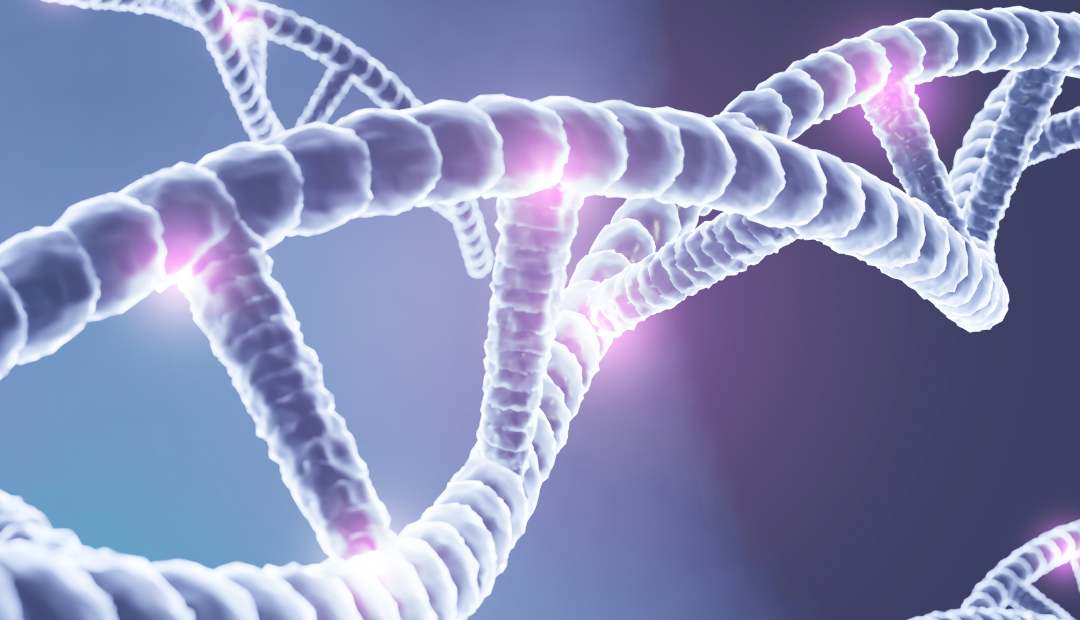
Autism and the GFCF Diet: What Does Science Say and What Do Experiences Show?
Explore the gluten- and casein-free (GFCF) diet in autism—what research says, how it affects the gut–brain axis, and practical tips for families.

Explore the gluten- and casein-free (GFCF) diet in autism—what research says, how it affects the gut–brain axis, and practical tips for families.

Discover how methylation and gene mutations like MTHFR influence autism, brain development, and child health, plus practical support strategies.



Proper nutrition during childhood lays the foundation for lifelong health. Vitamins and minerals play a key role in physical growth, cognitive development, immune strength, and energy production. But with so much information out there, it can be overwhelming to know what your child really needs. In this article, we break down the most essential child growth vitamins and explain how to include them in your child’s daily routine naturally.
Children are in a constant state of development. Their bodies require specific nutrients to build strong bones, support brain function, and regulate immune responses. Vitamin deficiencies can lead to fatigue, delayed growth, mood changes, and weakened resistance to infections. Ensuring your child gets the right vitamins supports optimal physical and mental development.
Supports calcium absorption and bone growth. Many children are deficient due to lack of sun exposure.
Essential for vision, immune function, and cell growth.
Boosts immunity, aids in iron absorption, and supports skin and tissue health.
Support energy metabolism, brain development, and red blood cell formation.
Crucial for oxygen transport and cognitive function. Low levels can impair learning and attention.
Vital for strong bones and teeth, especially during periods of rapid growth.
Supports immune function, wound healing, and cellular growth.
If your child eats a varied, whole-foods-based diet, they may get most of their nutrients from food. However, picky eating, food allergies, or digestive issues may justify the use of a high-quality children’s multivitamin. Always choose age-appropriate, sugar-free options and consult your pediatrician.
Supporting your child’s growth through proper nutrition doesn’t have to be complicated. By focusing on key child growth vitamins and offering a wide variety of whole foods, you can help your child thrive physically and mentally. When in doubt, consult your healthcare provider to personalize your child’s nutritional plan.

It’s no secret that today’s food landscape is working against children’s health. Everywhere you look, kids are bombarded with high-calorie, low-nutrient meals—fast food, sugary snacks, and heavily processed options that leave them full but undernourished. The long-term impact? Slower growth, weakened immune systems, and even cognitive setbacks. But here’s the good news: science-driven solutions are emerging, offering practical ways to ensure kids get the micronutrients, essential vitamins and minerals they need to thrive.
For millions of children, a diet packed with empty calories is the norm. It’s like trying to fuel a high-performance car with low-quality gas—it just doesn’t work. Parents, educators, and healthcare providers are seeing firsthand how a lack of essential nutrients can lead to everything from fatigue to developmental delays.
Even in wealthier countries where food is abundant, deficiencies in vitamin D, iron, calcium, and zinc are still alarmingly common. Experts warn that these gaps in nutrition don’t just cause short-term health problems—they can have lifelong effects, impacting everything from bone strength to brain development. That’s why tackling this issue requires a mix of education, smarter food choices, and strategic interventions.
Every vitamin and mineral in a child’s diet plays a unique role—like instruments in an orchestra, they need to work together in perfect harmony. Vitamin A supports vision, vitamin D strengthens bones, iron fuels energy levels, and zinc boosts immunity. When just one of these is missing, it throws off the entire balance.
Research shows that when kids receive the right mix of micronutrients, the improvements go beyond just physical health. They focus better in school, have more energy throughout the day, and even sleep better at night. Scientists are pinpointing key developmental windows when nutrition has the most profound impact, helping shape smarter dietary recommendations that can truly make a difference.
One of the easiest ways to address nutrient deficiencies is food fortification—adding essential vitamins and minerals to everyday foods. Many of us already benefit from this without realizing it. Ever wondered why milk contains vitamin D? Or why cereals are packed with iron? These small additions have helped reduce rickets, anemia, and other nutrition-related conditions across the world.
But fortification alone isn’t always enough. In many cases, targeted supplementation is necessary, especially for kids in low-income communities or those with dietary restrictions. Schools and healthcare providers have played a key role in distributing supplements like vitamin D drops and iron tablets, helping bridge nutritional gaps quickly and effectively. In countries that have implemented these programs, studies show noticeable improvements in children’s health, including fewer cases of stunted growth and better cognitive performance.
Schools aren’t just places for learning—they’re also critical in shaping kids’ eating habits. By offering fortified meals and incorporating nutrition education into the curriculum, schools can play a massive role in ensuring kids grow up with a better understanding of healthy eating.
Beyond the classroom, communities are stepping up too. Parent-teacher organizations, local health groups, and even social media communities are sharing budget-friendly meal ideas, organizing cooking workshops, and raising awareness about the importance of nutrient-rich diets. The more families feel supported, the easier it becomes to make informed, healthier choices at home.
While science and technology have given us a clearer understanding of how to improve children’s nutrition, turning those insights into real-world solutions is still a challenge. Governments, health organizations, and community leaders must navigate economic, cultural, and logistical barriers to make these strategies work for everyone. Policies like subsidizing healthier foods and encouraging food companies to fortify staple products with essential vitamins and minerals have already shown promise in some countries, but scaling these efforts globally requires thoughtful planning and collaboration.
Looking ahead, emerging technologies like blockchain and AI-driven nutrition tracking could make a big difference. By improving food transparency and helping families personalize their diets based on real nutritional data, these tools could make it easier for parents, schools, and healthcare providers to ensure kids get the nutrients they need. As research continues to uncover how different micronutrients interact in the body, the future of child nutrition looks more promising than ever. Each new discovery brings us closer to a world where every child has access to a diet that supports their growth, health, and development.
Turning complex nutritional research into simple, everyday habits is one of the biggest hurdles in improving childhood nutrition. It’s one thing to understand how vitamins and minerals work, but another to translate that knowledge into meals that kids actually enjoy. This is where collaboration between researchers, schools, food companies, and families is essential. When scientific findings are made accessible—through practical guidelines, easy recipes, and culturally relevant food options—healthy eating becomes less of a challenge and more of a habit.
For many parents, keeping up with nutrition advice can feel overwhelming. One day, a food is considered healthy; the next, it’s under scrutiny. But the key isn’t perfection—it’s consistency. Small, manageable changes, like adding more vegetables to meals, choosing fortified cereals, or swapping sugary drinks for water, can make a big impact over time. These simple shifts, when repeated daily, create lasting health benefits for kids.
Supporting children’s nutrition doesn’t have to be complicated. Here are some practical ways parents and educators can help ensure kids get the nutrients they need:
Working with local healthcare providers can also help personalize nutrition plans, especially for children with specific dietary needs. A well-rounded approach—rooted in science but adapted to each child’s lifestyle—ensures that good nutrition is both accessible and sustainable.
At the end of the day, ensuring kids get the nutrition they need is a shared responsibility. Parents, educators, healthcare providers, policymakers, and food industry leaders all have a role to play. By making small, consistent improvements in the way we approach food—at home, at school, and in communities—we can help create a future where every child has access to the micronutrients they need to grow, learn, and thrive.

The “First 1,000 Days” concept, or the early-life nutrition encompassing the period from conception to a child’s second birthday, represents one of the most vital phases of human development. Over this period, early-life nutrition exerts an extraordinarily profound influence on cognitive and physical growth, setting the stage for a healthier, more resilient future. In this editorial, we explore cutting-edge science, expert perspectives, and compelling industry examples that underscore why investing in early nutrition is remarkably effective in shaping lifelong outcomes.
For many years, researchers have recognized that the body and brain undergo rapid transformations during the first 1,000 days of life. Nutrients delivered during this crucial window serve not only to fuel immediate growth but also to build an enduring foundation for a child’s lifelong health. Scientific studies have consistently demonstrated that optimal intake of proteins, essential fats, vitamins, and minerals is critical to the proper formation of neural circuits, skeletal structures, and immune systems. By integrating AI-driven insights with decades of clinical research, scientists have elucidated how early nutritional interventions can prevent developmental delays, reduce the risk of chronic diseases, and even enhance future cognitive performance.
During this phase, cellular proliferation, brain synapse formation, and organ development are occurring at a breathtaking pace. Researchers have observed that even slight deficiencies can trigger irreversible changes, emphasizing that the quality of early nutrition plays an indispensable role in developmental trajectories. This evidence is bolstered by global health initiatives that stress maternal health and early childhood interventions, showing that when mothers are provided with proper nutrients, their infants reap substantial long-term benefits.
The human brain, one of the most complex biological structures, is especially sensitive to nutritional influences during early life. From the first neural connections to the establishment of intricate networks, every moment counts. Adequate nutrition during the first 1,000 days supports the rapid expansion of gray matter and the strengthening of white matter tracts, which are critical for communication within the brain. For example, the presence of omega-3 fatty acids such as DHA, found in fish oil and other nutrient-dense sources, is remarkably effective at fostering synaptic plasticity, which in turn enhances learning, memory, and behavior.
In the same vein, micronutrients like iron and zinc have been linked to improved cognitive performance. Children who receive proper amounts of these nutrients are less likely to experience attention deficits and learning difficulties. Expert pediatricians assert that by addressing nutritional deficits early, the risks of future developmental disorders are significantly reduced. This understanding has led to forward-looking public health policies that prioritize nutritional screening and early supplementation programs for at-risk populations.
Alongside cognitive growth, the first 1,000 days are pivotal for physical development. Bones, muscles, and organs are formed rapidly, meaning that any nutritional shortfall can leave long-lasting marks on a child’s overall physical stature and immune resilience. Adequate calcium, vitamin D, and protein not only facilitate the formation of strong bones but also support muscle growth and repair. Consequently, early-life nutrition is directly linked to reduced incidences of stunted growth and malnutrition, issues that have global significance.
In many developing regions, community-based initiatives are making a substantial difference. Programs aimed at providing balanced meals and nutritional education have led to noticeable improvements in physical development among children, reinforcing the idea that early nutritional investments yield extraordinary returns. These programs, driven by collaborative efforts among governments, NGOs, and healthcare professionals, serve as industry examples of how focused nutrition strategies during the first 1,000 days can have far-reaching effects on public health.
Leading experts in the fields of pediatrics and nutritional science continually emphasize that the first 1,000 days are a non-negotiable period for intervention. Renowned scientists and clinicians are utilizing state-of-the-art research methodologies to map out how specific nutrients influence genetic expression and epigenetic modifications. Their findings reveal that early nutrition not only impacts immediate developmental milestones but also has cascading effects on metabolism, immunity, and even mental health outcomes later in life.
For instance, research involving large-scale cohort studies has shown that children who receive balanced nutrition during early life are significantly less likely to develop chronic conditions such as obesity, type 2 diabetes, and cardiovascular diseases as adults. These expert perspectives are gradually shifting public health paradigms, prompting policymakers to adopt measures that integrate maternal and child nutrition into broader health agendas. By investing in these early days, societies are essentially safeguarding their future by mitigating long-term healthcare costs and improving overall quality of life.
Imagine constructing a skyscraper without a solid foundation; the structure might look impressive, but it is inevitably vulnerable to external forces. In the same way, the first 1,000 days serve as the foundation of an individual’s health and wellbeing. Just as an architect meticulously designs every floor to support the building’s overall stability, nutrition experts tailor dietary recommendations to ensure every cell, organ, and neural network is built to withstand life’s challenges. This analogy, while simple, powerfully encapsulates the urgency and potential of early-life nutritional interventions, making the science both accessible and compelling.
Moreover, the process can be likened to writing the first chapters of a novel. The narrative of life is written early on, and the quality of these initial pages influences the entire storyline. When nutrition is provided thoughtfully and consistently during this critical phase, the plot of one’s life unfolds with resilience, cognitive agility, and physical robustness.
Public health initiatives across the globe have begun to harness the insights provided by early-life nutrition research. Numerous programs are currently in place, ranging from community-based nutritional education campaigns to innovative supplementation protocols in prenatal and postnatal care. These interventions are designed to target both undernutrition and micronutrient deficiencies, which have been identified as significant barriers to optimal development.
For example, in certain low-income regions, international organizations have partnered with local governments to distribute nutrient-rich supplements and fortified foods. These remarkably effective programs have not only reduced rates of stunting but have also improved school readiness and cognitive performance in children. In high-income countries, similar strategies are being employed through government-supported initiatives that ensure pregnant women have access to prenatal vitamins and comprehensive dietary counseling. By integrating these approaches, experts believe that a new era of preventive health care is on the horizon, one where the seeds of lifelong wellbeing are sown during the earliest days of life.
While the science behind the first 1,000 days is robust, several challenges remain. In many parts of the world, poverty, limited access to healthcare, and cultural misconceptions about nutrition continue to hinder progress. However, by leveraging innovative technologies such as mobile health applications and AI-driven nutritional analysis, healthcare providers are gradually overcoming these barriers. These advanced tools allow for real-time monitoring of maternal and infant nutritional status, ensuring that interventions can be tailored to the unique needs of every community.
Moreover, ongoing research is exploring the role of the microbiome and its interaction with early nutrition. Preliminary findings suggest that a healthy gut microbiome may further enhance nutrient absorption and bolster the immune system, thereby amplifying the benefits of a balanced diet during the first 1,000 days. As these discoveries continue to evolve, they are setting the stage for an even more holistic understanding of early-life health, paving the way for interventions that are as dynamic as they are effective.
The potential benefits of optimizing nutrition during the first 1,000 days extend far beyond childhood. As research continues to reveal the intricate connections between early nutrition, cognitive function, and physical health, the implications for adult wellbeing and public health policy become increasingly clear. By prioritizing maternal and infant nutrition, societies can expect not only to reduce the prevalence of chronic diseases but also to foster a generation of individuals who are better equipped to meet the challenges of the modern world.
This forward-looking perspective encourages us to view early nutrition not merely as an isolated intervention, but as the cornerstone of a comprehensive strategy for lifelong health. In an era marked by rapid technological advancements and unprecedented access to information, the promise of a healthier future lies in our ability to harness the power of early-life nutrition. With continued research, community engagement, and innovative policymaking, we are well on our way to unlocking the full potential of the first 1,000 days.
In summary, the “First 1,000 Days” concept offers a profound, science-based framework for understanding how early nutritional interventions can shape cognitive and physical development in ways that reverberate throughout a person’s life. By drawing upon expert perspectives, global research, and practical success stories, this editorial illustrates that investing in early nutrition is not only a medical imperative but also an ethical and economic one. When we ensure that every child receives optimal nutrition from conception to toddlerhood, we are actively constructing the foundation for a healthier, more prosperous future.
Embracing this concept means supporting policies and practices that empower families, educators, and healthcare providers to work in unison. As societies increasingly recognize the long-term benefits of a strong nutritional start, the promise of lifelong cognitive agility, robust physical health, and overall wellbeing becomes remarkably attainable. The science is clear and compelling: by nurturing the first 1,000 days, we are nurturing the very essence of human potential.
Ultimately, the call to action is both urgent and inspiring. Whether through community outreach programs, innovative technology, or simply by sharing knowledge and best practices, every stakeholder has a role to play in ensuring that the first 1,000 days serve as a beacon of hope and opportunity for all. In doing so, we not only invest in individual futures but also in the collective strength and resilience of our global society.
Black, R. E., Victora, C. G., Walker, S. P., Bhutta, Z. A., Christian, P., de Onis, M., Ezzati, M., Grantham-McGregor, S., Katz, J., Martorell, R., & others. (2013). Maternal and child undernutrition and overweight in low-income and middle-income countries. The Lancet, 382(9890), 427–451.
Victora, C. G., de Onis, M., Hallal, P. C., Blössner, M., & Shrimpton, R. (2010). Worldwide timing of growth faltering: Revisiting implications for interventions. Pediatrics, 125(3), e473–e480.
World Health Organization. (2013). Essential Nutrition Actions: Improving Maternal, Newborn, Infant and Young Child Health and Nutrition. Geneva: World Health Organization.
Prado, E. L., & Dewey, K. G. (2014). Nutrition and brain development in early life. Nutrition Reviews, 72(4), 267–284.
Georgieff, M. K. (2007). Nutrition and the developing brain: Nutrient priorities and measurement. The American Journal of Clinical Nutrition, 85(2), 614S–620S.
Grantham-McGregor, S., Cheung, Y. B., Cueto, S., Glewwe, P., Richter, L., & Strupp, B. (2007). Developmental potential in the first 5 years for children in developing countries. The Lancet, 369(9555), 60–70.
Heidkamp, R., & de Onis, M. (2016). The double burden of malnutrition: A silent driver of noncommunicable disease. The Lancet, 388(10050), 2065–2067.
Ramakrishnan, U., Martorell, R., Schroeder, D. G., & Flores, R. (1999). Role of intergenerational effects on linear growth. The Journal of Nutrition, 129(2), 544S–549S.
Medical News Today. (n.d.). The First 1,000 Days: Why Early-Life Nutrition is Crucial for Lifelong Health. Retrieved from https://www.medicalnewstoday.com/